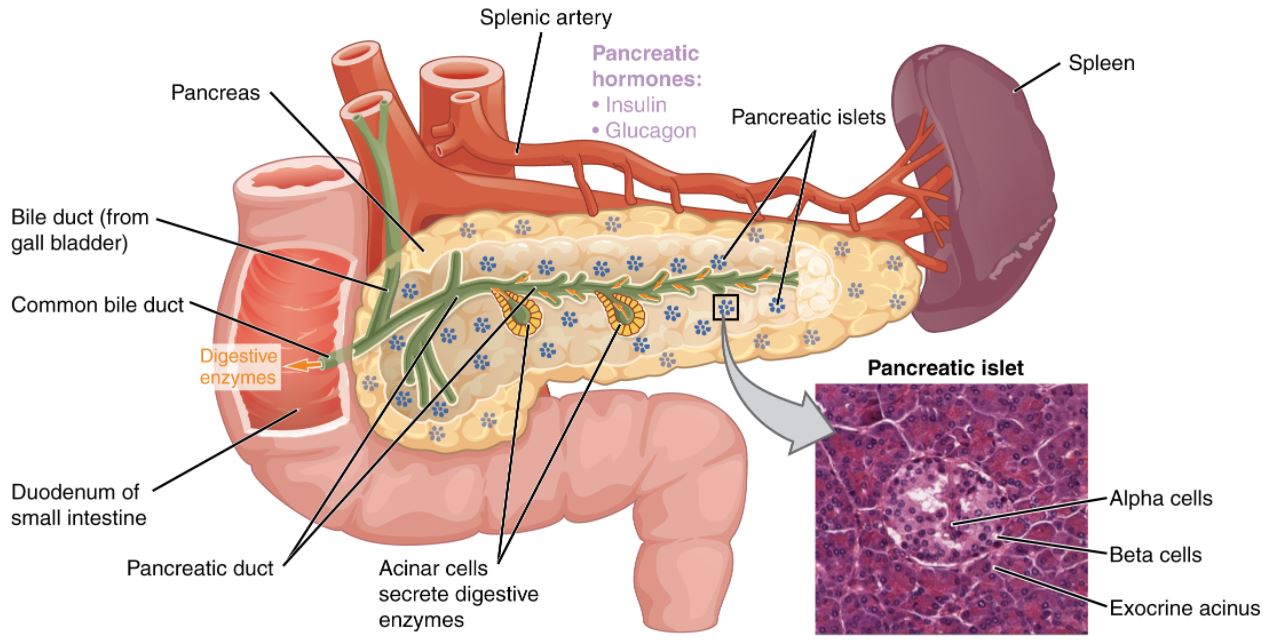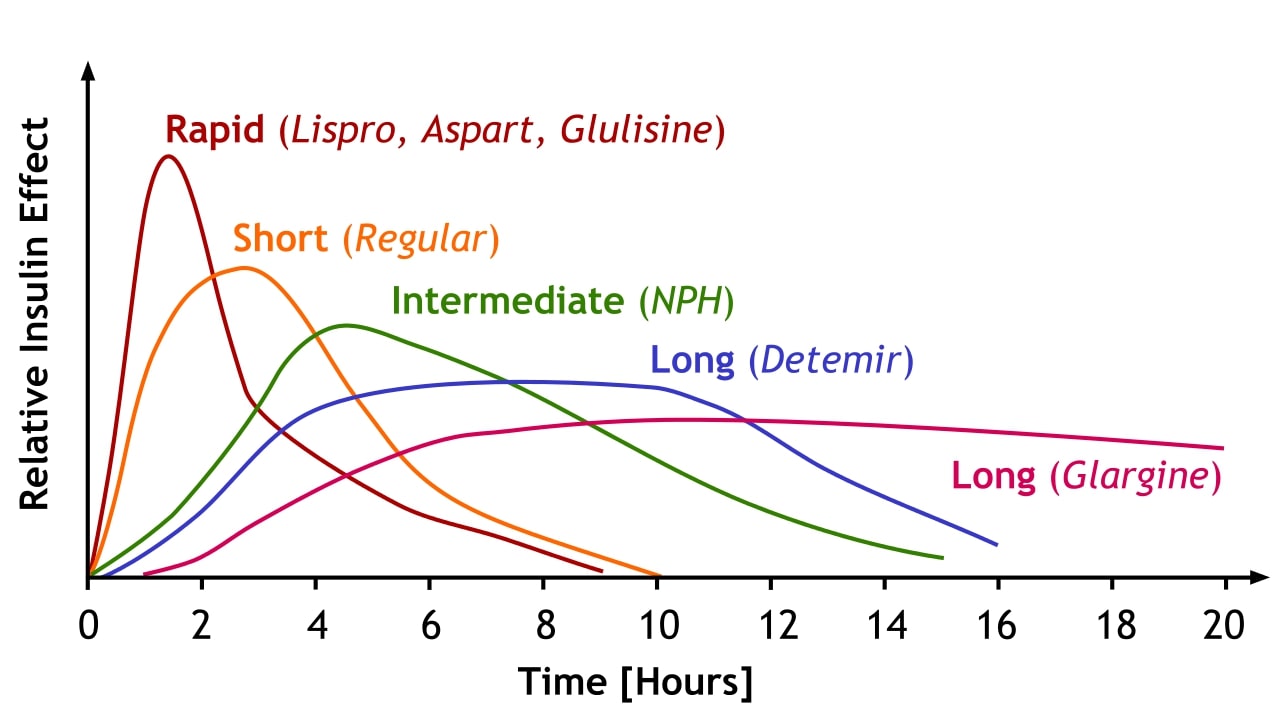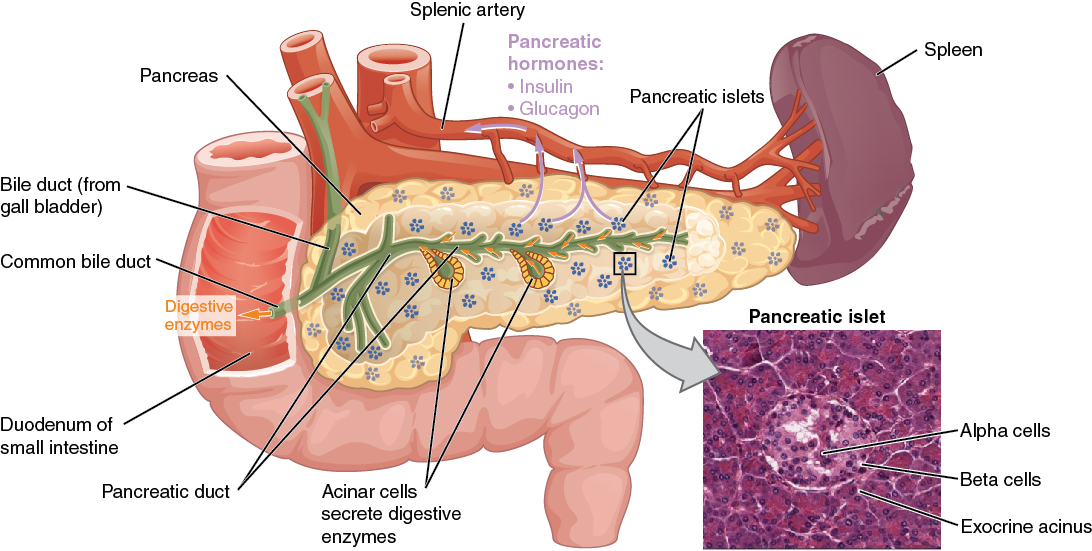Playlist
Show Playlist
Hide Playlist
Type 1 Diabetes Management with Case
-
02-03 Diabetes Mellitus part 1.pdf
-
Reference List Endocrinology.pdf
-
Reference List Diabetes Mellitus.pdf
-
Download Lecture Overview
00:00 Therapy for type 1 diabetes. Usually these patients are looking at life-long insulin therapy as the first line treatment. Physiologic insulin therapy also known as intensive insulin therapy is the ideal insulin regimen as it attempts to mimic the body's actions of normal pancreatic beta cells. Let's go on to another case. Here we have a 14-year-old boy who is rushed to the emergency room after became disoriented at home. His parents say that the boy was doing well until 2 days ago when he got sick and vomited several times. They thought he was recovering but today he appeared to be disoriented since the morning. His vital signs are normal except for shallow rapid breathing at a rate of 33 breadths/minute. His blood sugar level is 654 mg/dL and his urine is positive for ketones. He is diagnosed with diabetic ketoacidosis and is managed with intravenous fluids and insulin. He responds well to therapy. His parents are told that their son has type 1 diabetes and insulin therapy options are being discussed. Which types of insulin can be used in this patient for the rapid action required during meal times as well as for his basal needs. This is a teenage boy, type 1 diabetes is more likely and we have confirmed the diagnosis. He has also presented with classic features of diabetic ketoacidosis initially with vomiting associated with dehydration. 01:35 He may have had a preceding infection that was subclinical, and he has presented with respiratory alkalosis in the form of tachypnea in response to developing a metabolic acidosis from diabetic ketoacidosis. Very high blood glucose and urine positive for ketones help steer you towards this diagnosis. This patient's presentation with type 2 diabetes with DKA is not an uncommon initial presentation and it is usually at this point during the phases prior to discharge from the hospital that discussion of long term regimens to control the diabetes are discussed. A preprandial insulin lispro and a basal insulin glargine would be ideal. This provides the combination of a long-acting basal insulin that can be taken in the morning and evening with shorter-acting rapid onset insulin at pre-meal time. There is another insulin that can also be delivered by inhalation, which is not widely used but I will discuss the basics here. 02:45 It is called Technosphere inhaled insulin, marketed as Afrezza. 02:50 While this medication represents an interesting development in insulin delivery, it's important to understand its very specific and limited role in diabetes management. 03:00 It's not recommended for Type 1 diabetes (Grade 1B evidence) and should only be considered in select Type 2 diabetes patients who are resistant to injectable insulin. 03:12 Key contraindications include asthma, COPD, active lung cancer, or current/recent smoking, and it requires regular pulmonary function monitoring. 03:24 This is a table of the different types of insulin used in diabetes management. 03:29 Understanding insulin pharmacokinetics is crucial for proper dosing and timing of insulin administration. 03:36 Let's break this down into two main categories: prandial and basal insulin. 03:41 Prandial, or mealtime, insulins are designed to cover carbohydrate intake during meals. 03:48 In this category, we have: - Rapid-acting insulins like lispro, aspart, and glulisine, which start working within 15-30 minutes and last 4-6 hours. These are excellent for mealtime coverage because they closely mimic the body's natural insulin response to food. 04:08 - Regular insulin, an older formulation, takes 30 minutes to start working and lasts 8 hours. 04:16 Due to its slower onset, patients need to inject it 30 minutes before meals. 04:21 Basal insulins provide background insulin coverage throughout the day. Looking at our options: - NPH is an intermediate-acting insulin, working for about 12 hours with a peak at 4-6 hours. 04:35 Its pronounced peak can make blood sugar management more challenging. 04:39 - Modern basal analogs like glargine, detemir, and degludec are significant improvements because they: 1. Have minimal or no pronounced peaks, reducing the risk of unexpected low blood sugar 2. Last longer (20-24 hours or more) 3. Provide more consistent coverage A fascinating recent development is insulin icodec, which only needs to be injected once weekly rather than daily. 05:11 This could significantly improve treatment adherence for some patients. 05:16 When prescribing insulin, we typically use a combination of prandial and basal insulins to mimic natural pancreatic function. 05:24 The choice depends on factors like the patient's lifestyle, blood sugar patterns, and risk of hypoglycemia. 05:32 Understanding these pharmacokinetic profiles helps us select the most appropriate insulin regimen for each individual patient. 05:41 Intensive insulin therapy consists of multiple daily injections usually more than 3 per day with intermediate or long acting insulin for basal coverage and multiple preprandial injections throughout the day with analog or regular insulin. It can also include continuous subcutaneous infusions and mealtime dosing with an insulin pump. They just support targeting normal glycemic levels and a goal hemoglobin A1c of less than 7% to reduce the long-term complications of diabetes. Long-term reductions in early microvascular disease of 34-76% can be expected and also reductions in cardiovascular events in the range of 42-57%. 06:28 Risks, however, of very very tight intensive insulin therapy are more frequent episodes of hypoglycemia and with the use of insulin unfortunately weight gain. Initial total daily doses of insulin typically range from 0.3 to 1 unit/kg/day. The basal dose is usually half of the daily calculative dose of insulin. Let me discuss the current standards in diabetes management for 2024. 06:55 We've seen significant advances in both insulin delivery and glucose monitoring methods. 07:01 For insulin delivery, insulin pens have become the most widely used and preferred method, according to the ADA 2024 Standards of Care. These pens combine a reservoir and delivery system in one device, making them user-friendly and precise. They're particularly good for patients requiring multiple daily injections and have shown improved treatment adherence compared to traditional syringes. 07:28 Insulin pumps represent an important advance in technology. These devices provide continuous insulin delivery and can integrate with Continuous Glucose Monitoring (CGM) systems. 07:41 They're especially valuable for patients needing intensive control or those comfortable with technology. 07:48 The automated adjustments and smart dosing features have shown impressive improvements in glycemic control. 07:54 I should mention inhaled insulin briefly. 07:58 While it's an interesting development, it has a very limited role. 08:02 It's not recommended for Type 1 diabetes and is only considered for select Type 2 patients who resist injectable insulin and have normal lung function. 08:12 In terms of glucose monitoring, we now have two main advanced options. 08:17 Flash monitoring has become particularly popular, especially in Type 1 diabetes. 08:23 These systems use a 14-day sensor and eliminate routine fingerstick testing. 08:29 The evidence is impressive - showing a 53% reduction in severe hypoglycemia and significant improvements in HbA1c. 08:39 Continuous Glucose Monitoring systems go a step further, providing real-time readings and integrating with insulin pumps. 08:47 They're particularly valuable for automated insulin delivery and have shown excellent results in improving overnight control and reducing glycemic variability. 08:58 The key point to remember is that we now have multiple options to tailor diabetes management to individual patient needs. 09:07 The choice between these methods depends on factors like patient preference, lifestyle, technical comfort, and specific clinical requirements. 09:17 Insulin dosing immediately after meal is appropriate in certain situations particularly when food intake is unpredictable. 09:25 Postprandial insulin dosing allows for a reduction in the insulin dose that is commensurate with the amount of food ingested to avoid hypoglycemia that could have resulted from the insulin dose. 09:37 Postprandial insulin dose is reduced by half if only half of the meal is consumed.
About the Lecture
The lecture Type 1 Diabetes Management with Case by Michael Lazarus, MD is from the course Diabetes Mellitus. It contains the following chapters:
- Type 1 DM Treatment
- Case: 14-year-old Boy with Disorientation
- Various Types of Insulin
- Intensive Insulin Therapy
- Principles of Insulin Therapy
Included Quiz Questions
What is the underlying mechanism of the following patient's presenting illness? A 14-year-old boy is rushed to the emergency department after becoming disoriented at home. His parents say that 2 days ago he got sick and vomited several times. He was recovering but today appeared to be disoriented since the morning. Physical examination: Normal vital signs except for shallow rapid breathing (33 beats/min) Laboratory test results: blood sugar level is 654 mg/dL, and urine is positive for ketones. Diabetic ketoacidosis is diagnosed, and he is treated with fluids and insulin. He responds well to the therapy. Type 1 DM is diagnosed, and insulin therapy options are being discussed.
- Loss of endogenous insulin production by the pancreas
- Excessive endogenous insulin production by the pancreas
- Relative insulin resistance from chronically elevated insulin levels
- Excessive ketone production from an inborn error of metabolism
- Excessive exogenous insulin administration
Which of the following types of insulin is most appropriate to give before each meal?
- Lispro
- NPH
- Glargine
- Detemir
- Regular insulin
You are initiating insulin therapy for a 25-kg patient with newly diagnosed type 1 diabetes. Which of the following is the best starting regimen?
- 10 units glargine once daily and 3 units lispro 3 times daily before meals
- 15 units glargine once daily and 15 unit lispro 3 times daily before meals
- 15 units lispro once daily and 3 units glargine 3 times daily before meals
- 8 units NPH 3 times daily before meals and 8 units glargine once daily
- 15 units lispro 3 times daily before meals
Which types of insulin can be used for the patient described below? A 14-year-old boy is rushed to the emergency department after becoming disoriented at home. His parents say that 2 days ago he got sick and vomited several times. He was recovering but today appeared to be disoriented since the morning. Physical examination: Normal vital signs except for shallow rapid breathing (33 breaths/min). Laboratory test results: Blood sugar level is 654 mg/dL, and urine is positive for ketones. Diabetic ketoacidosis is diagnosed, and he is treated with fluids and insulin. He responds well to the therapy. Type 1 DM is diagnosed, and insulin therapy options are being discussed.
- Preprandial insulin (e.g. lispro, aspart, and glulisine) and basal insulin (e.g. glargine or detemir)
- Only a preprandial bolus cover with short-acting insulin is required.
- Preprandial insulin (e.g., glargine and glulisine) and basal insulin (e.g., regular insulin)
- Only a basal cover with long-lasting insulin is required.
Customer reviews
5,0 of 5 stars
| 5 Stars |
|
5 |
| 4 Stars |
|
0 |
| 3 Stars |
|
0 |
| 2 Stars |
|
0 |
| 1 Star |
|
0 |






